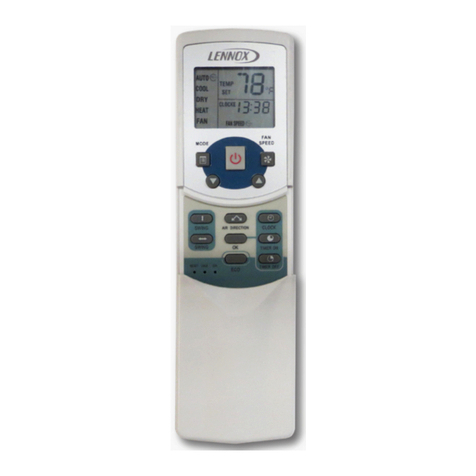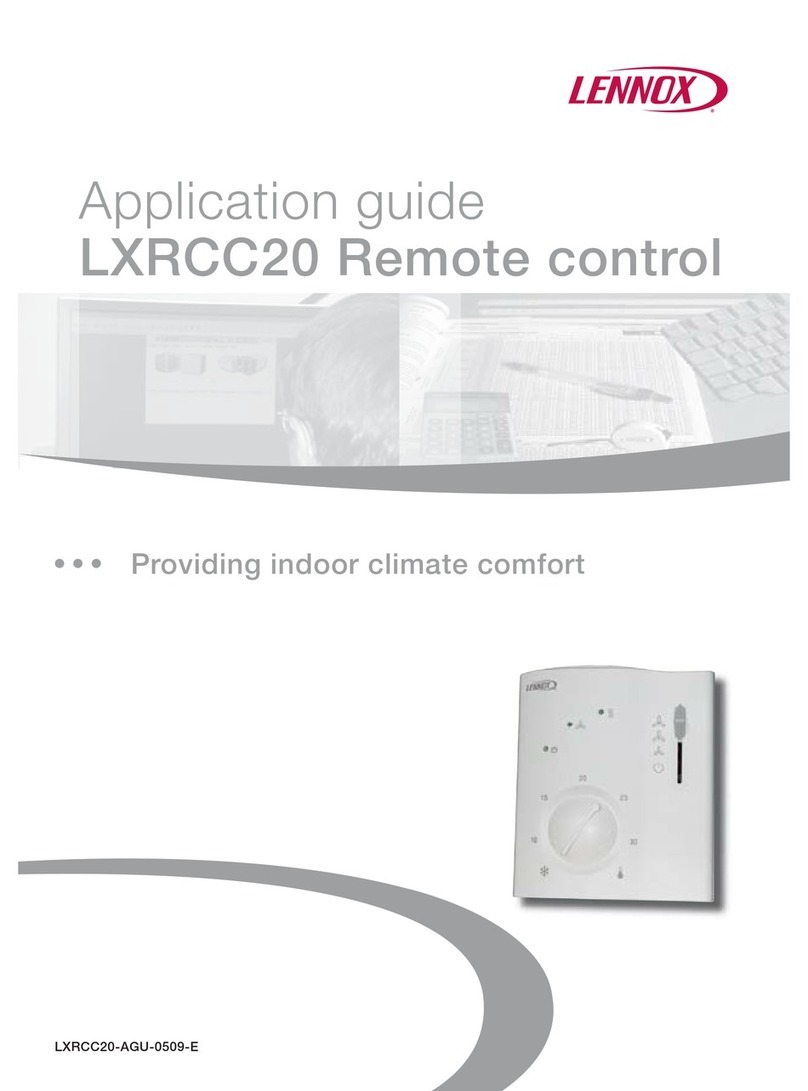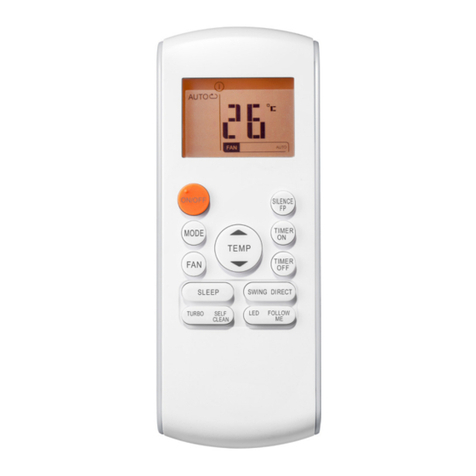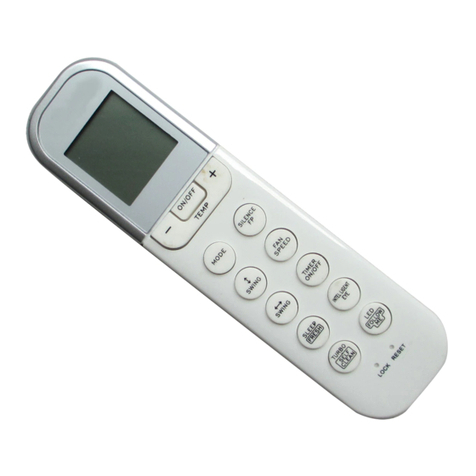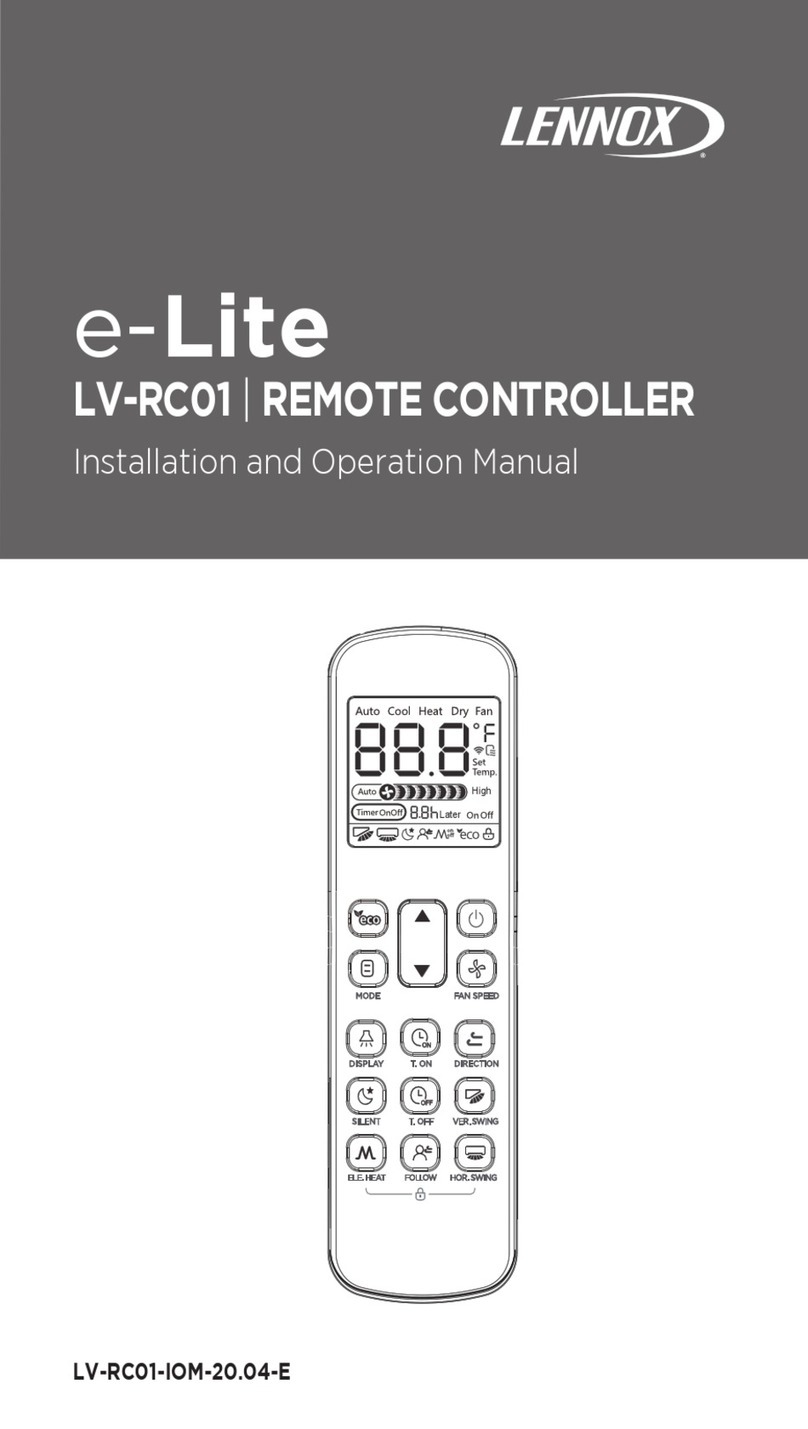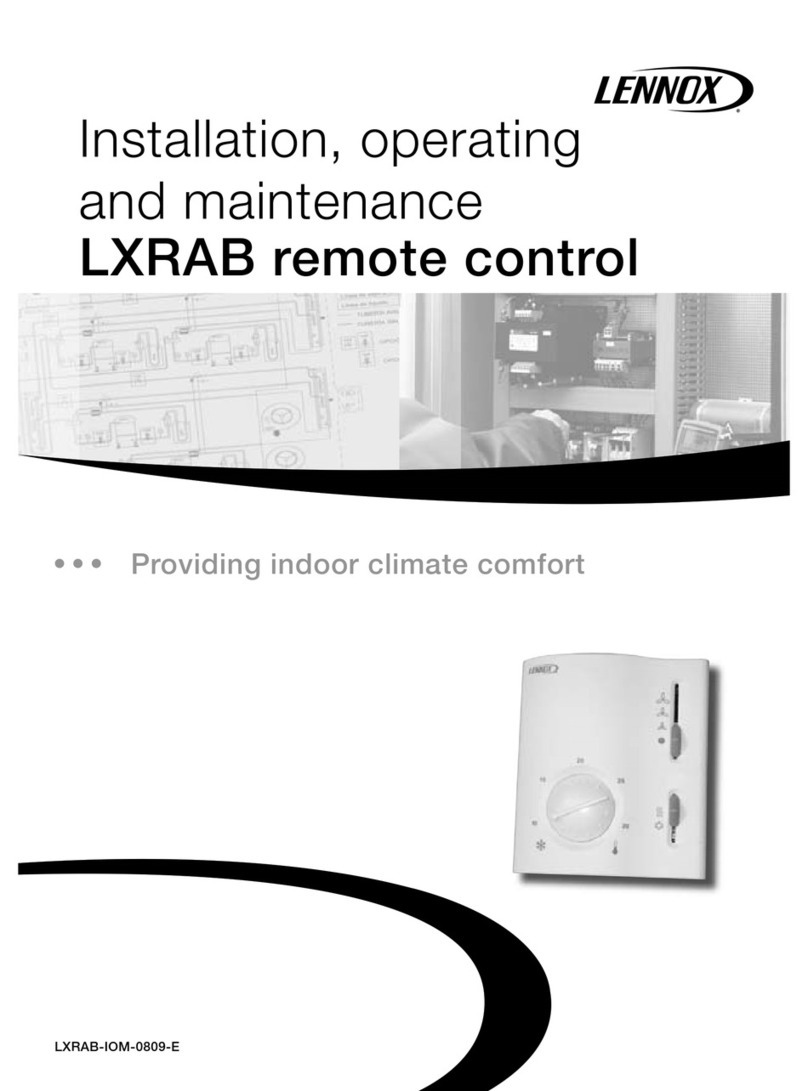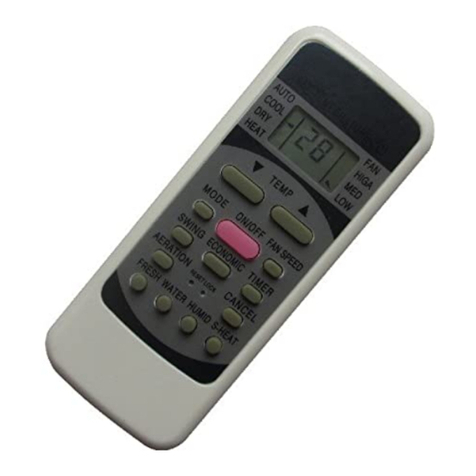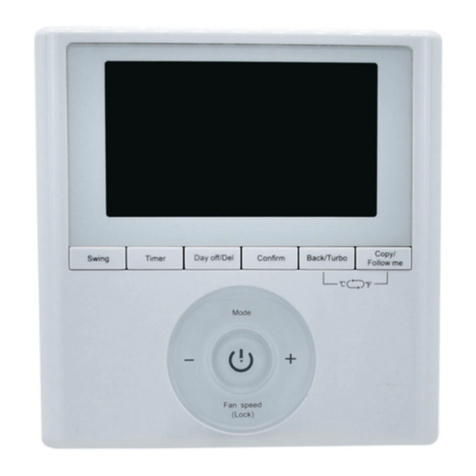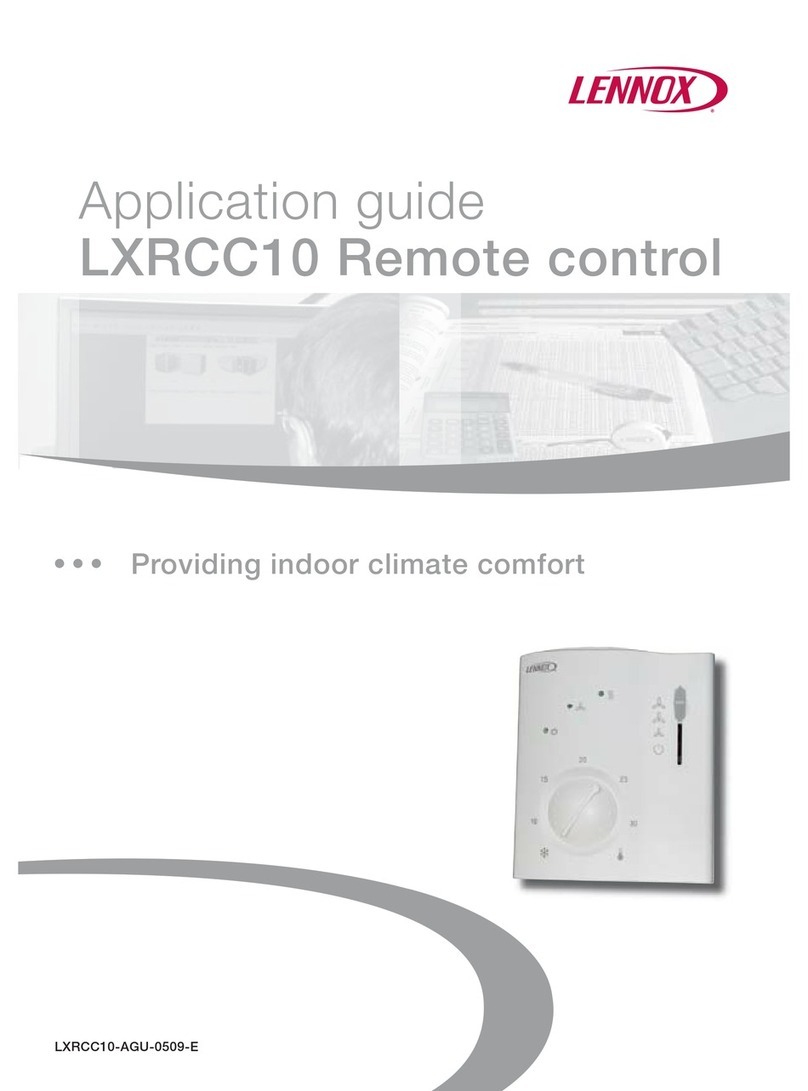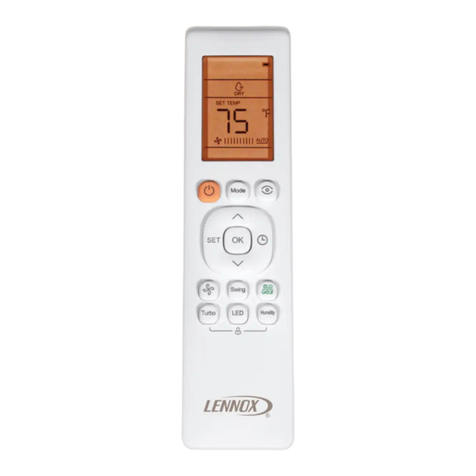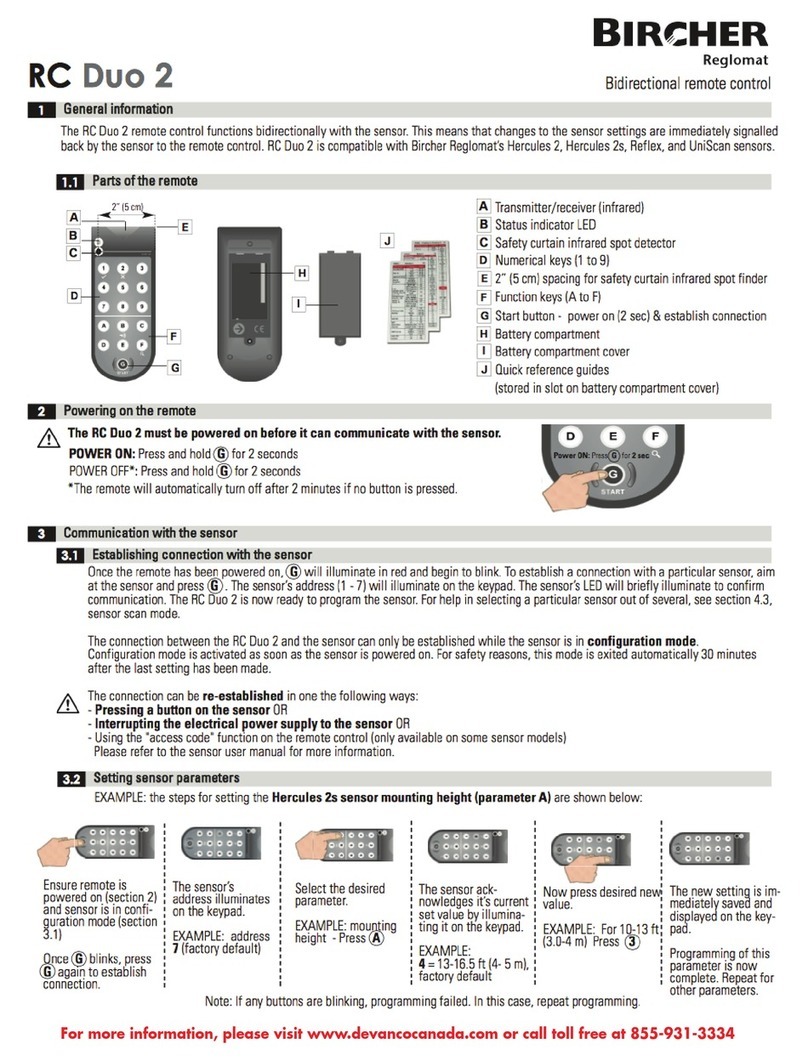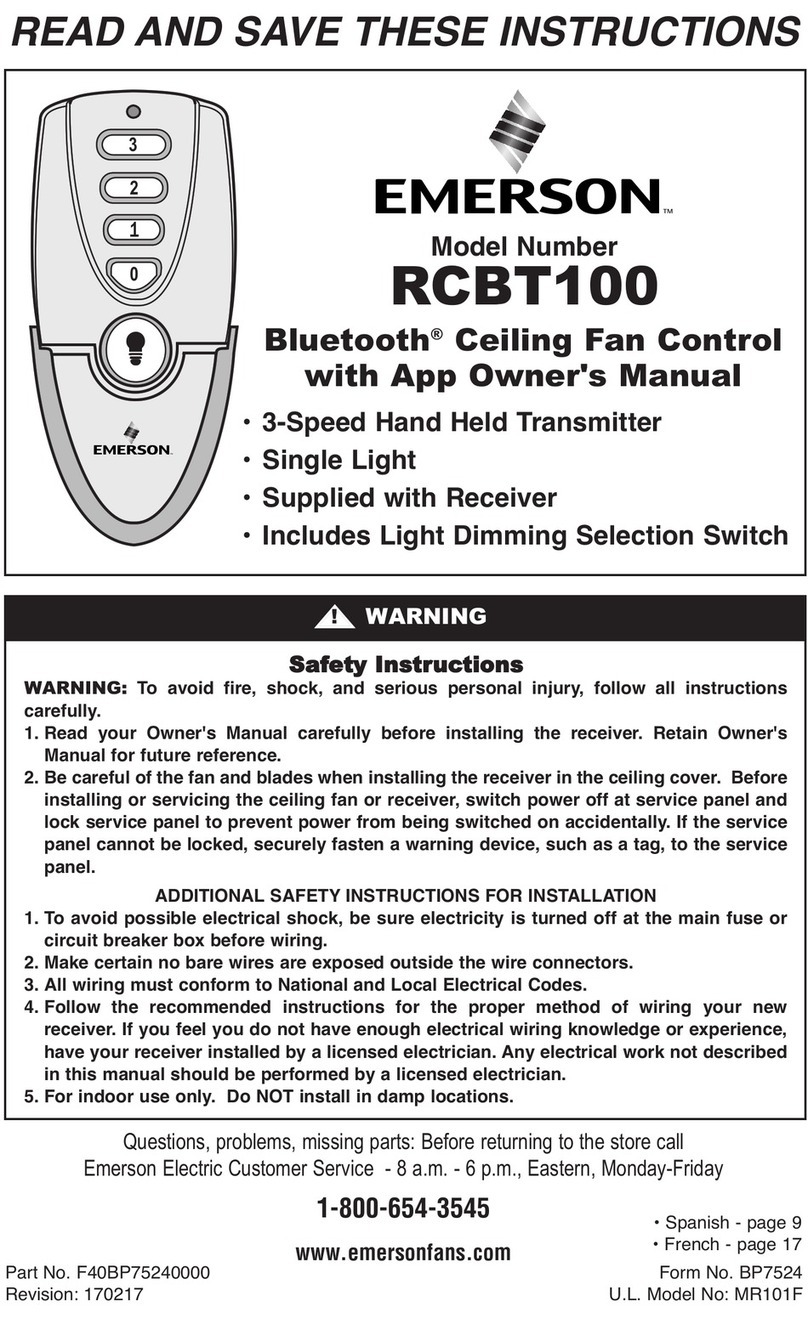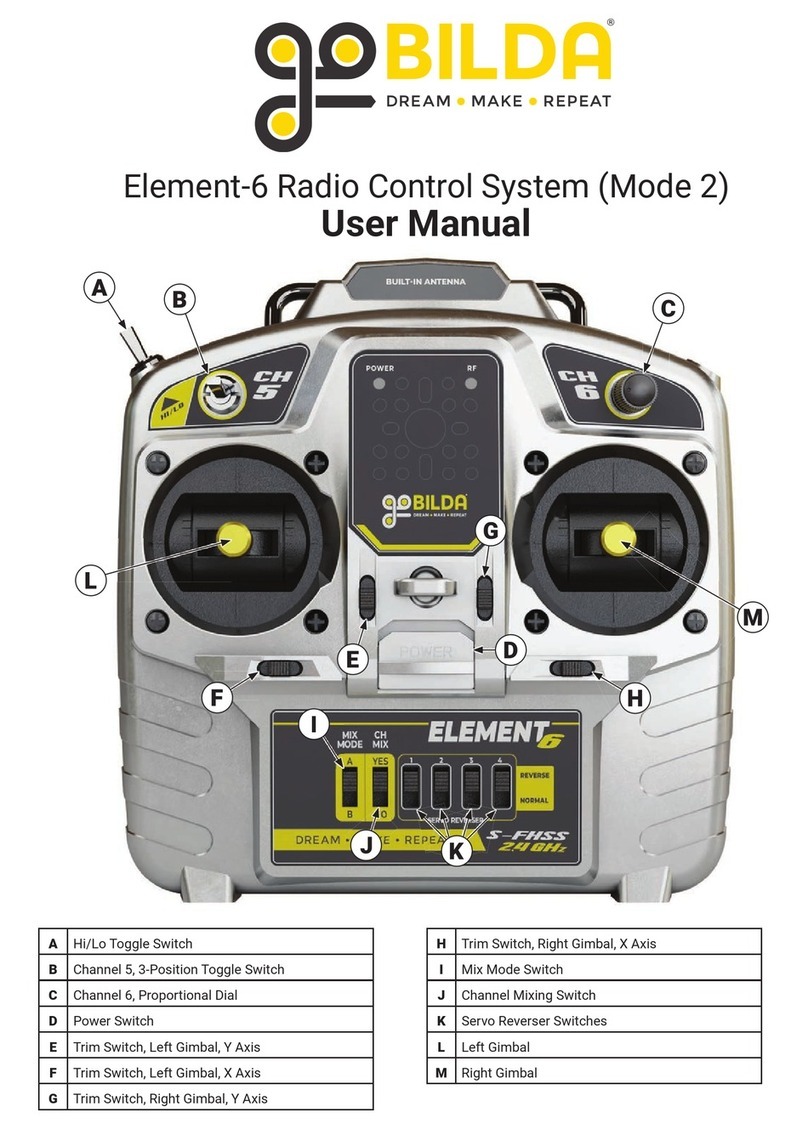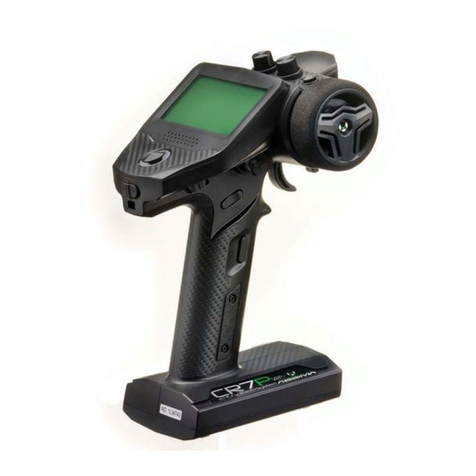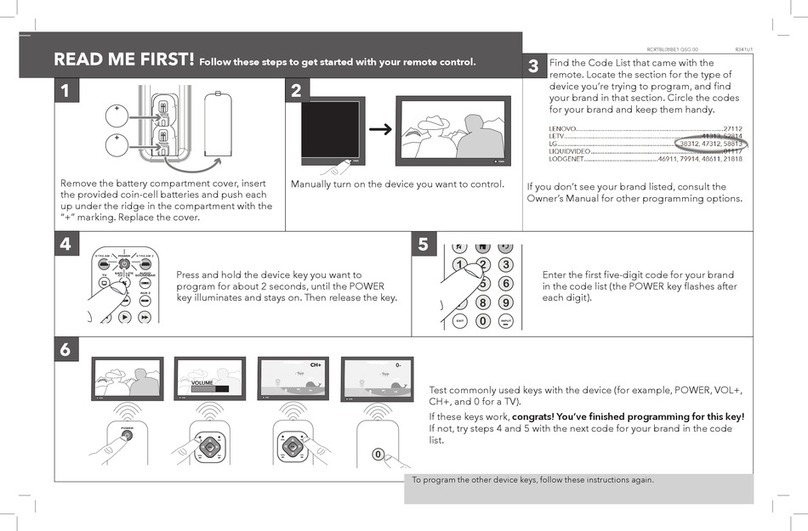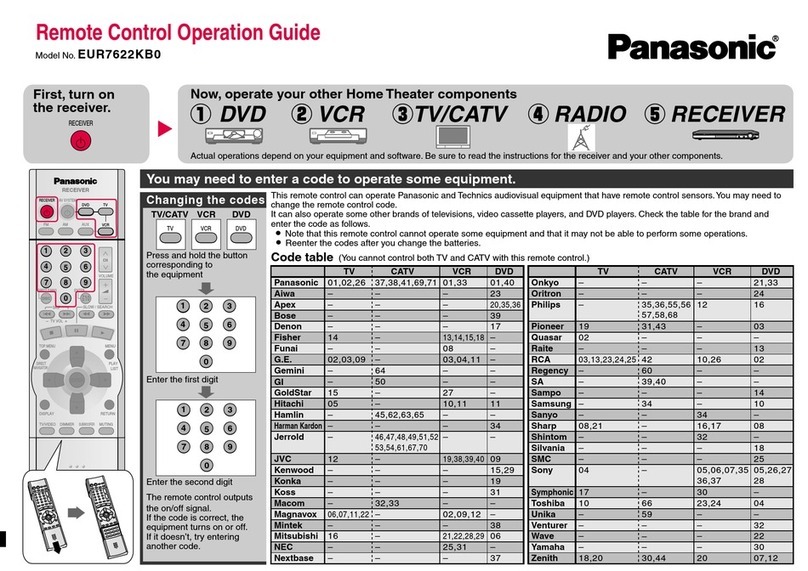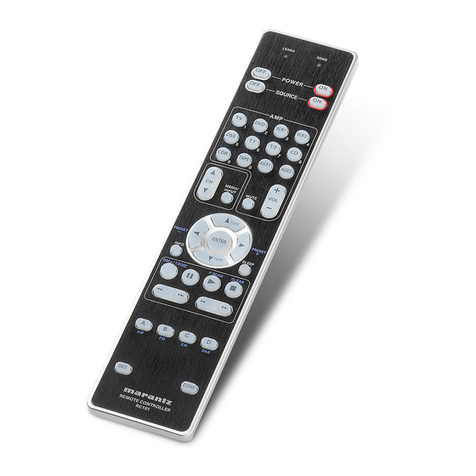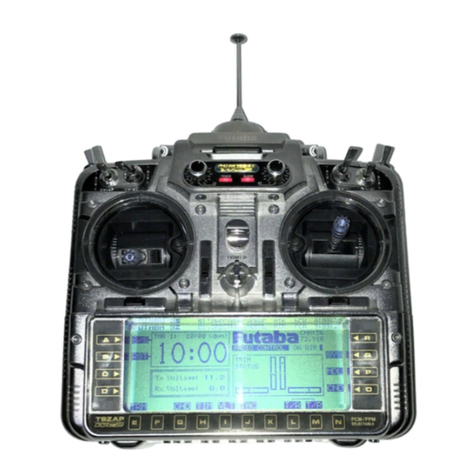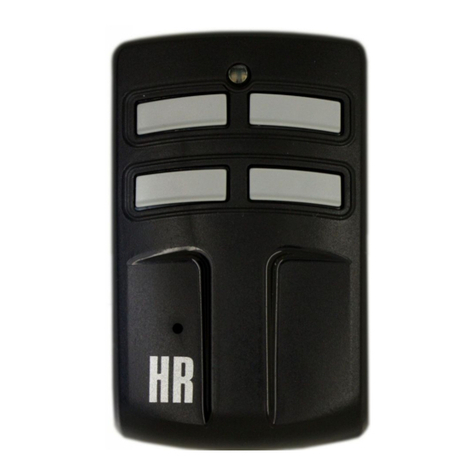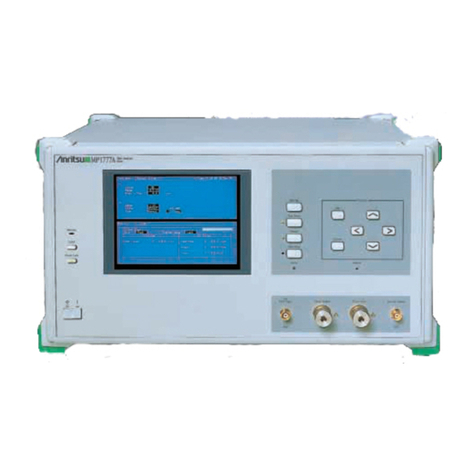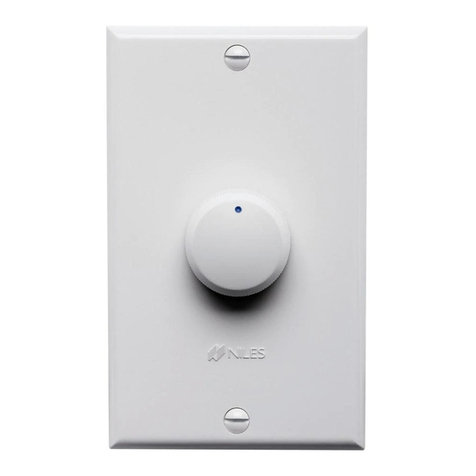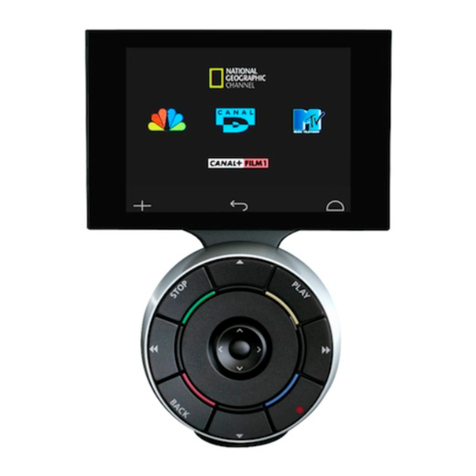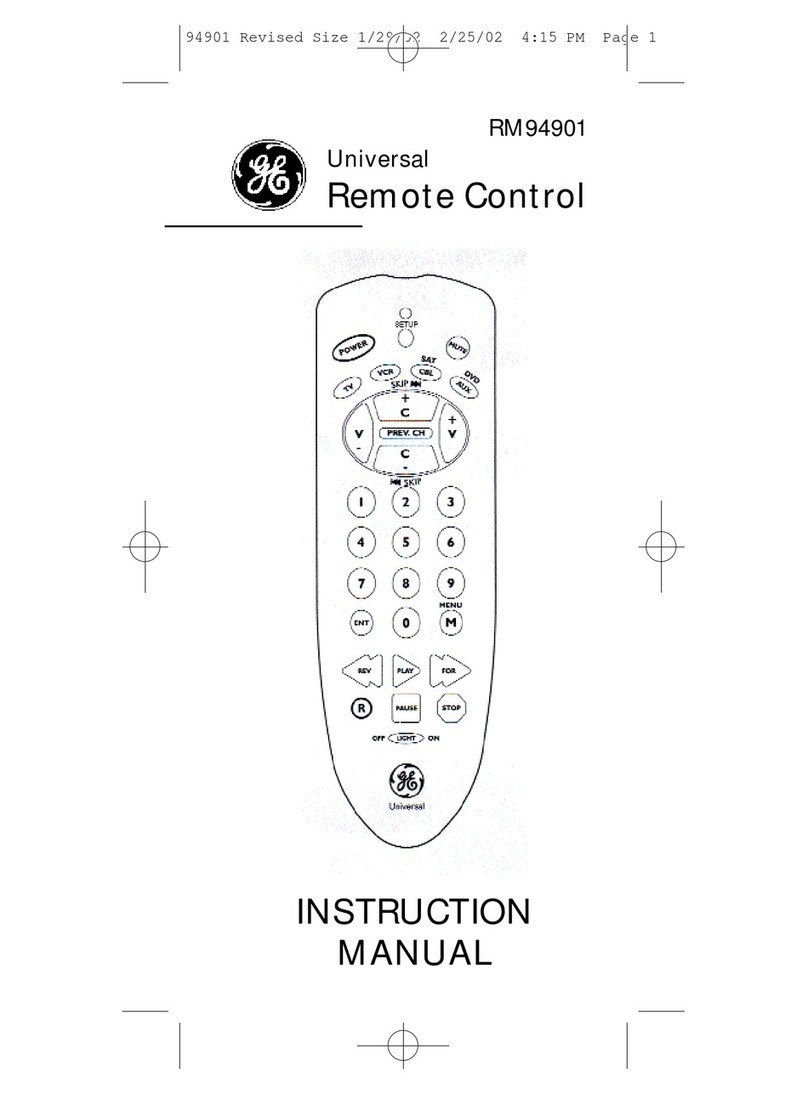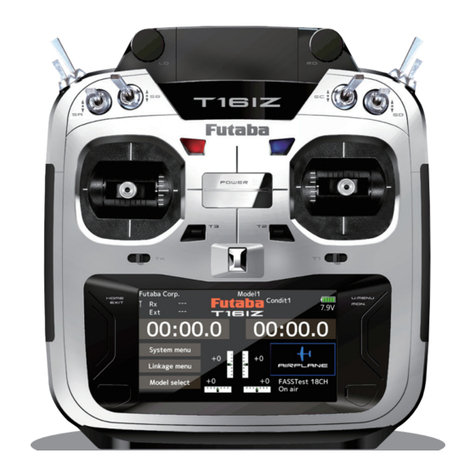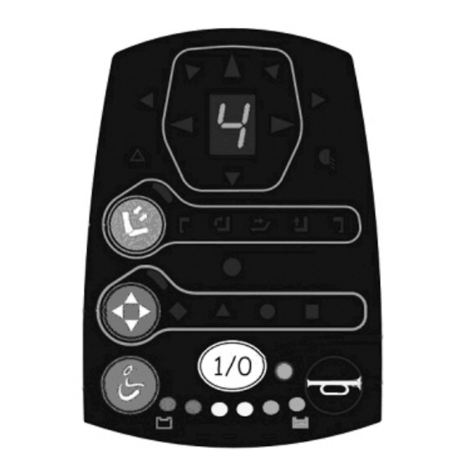7
FUNZIONE AUTOFAN
Il funzionamento standard della
macchina prevede che la ventila-
zione sia sempre attiva e che la
regolazione avvenga sulle valvole
acqua.
Impostando i Dip è possibile inter-
venire con la regolazione non solo
sulle valvole ma anche sul ventila-
tore, avendo impostato però una
post ventilazione di 3 minuti.
La funzione Autofan può essere
impostata nella sola modalità di
riscaldamento, nella sola modalità
di raffreddamento, in entrambe le
modalità.
Al raggiungimento del set, la
valvola acqua viene diseccitata e,
dopo 3 minuti, anche il ventilatore
viene fermato.
- Autofan solo in raffreddamento
- Autofan solo in riscaldamento
- Autofan in riscaldamento e
raffreddamento
Nota: per evitare che fenomeni di
stratificazione alterino il valore di
temperatura rilevata dalla sonda
aria durante lo stato di OFF del
ventilatore,questoviene comunque
avviato 40 secondi ogni 5 minuti.
Con / Senza telecomando: da
utilizzare quando venga eseguita una
rete di Cassette in collegamento RS
485, abilita o disabilita il ricevitore
dell’apparecchio o consente di non
installare il ricevitore stesso.
AUTOFAN FUNCTION
In standard operation the fan is
always on and control is performed
on the water valves.
The dipswitches can be set to allow
control not only on the valves but
also on the fan, however with a
post-ventilation time of 3 minutes.
The Autofan function can be set
in heating only mode, cooling only
mode or in both modes.
When reaching the set point, the
water valve is de-energised, and
then the fan is stopped after 3
minutes.
- Autofan in cooling only
- Autofan in heating only
- Autofan in heating and cooling
Note: to avoid phenomena of
stratification altering the temperature
value measured by the air probe
when the fan is OFF, this is started
for 40 seconds every 5 minutes.
With/Without remote control: to be
used when a network of Cassettes is
operated via an RS485 connection, to
enable or disable the receiver on the
appliance or allow the receiver to not
be installed.
7A
FONCTION AUTOFAN FUNKTION AUTOFAN FUNCIÓN AUTOFAN FUNCTIE AUTOFAN
Le fonctionnement standard de la
machine prévoit que la ventilation
soittoujours activeet que leréglage
se fasse sur les vannes eau.
En programmant le Dip il est possible
d’intervenir avec le réglage non
seulement sur les vannes mais
également sur le ventilateur en
programmant une post ventilation
de 3 minutes.
La fonction Auto Fan peut être
programmée en mode chauffage,
en mode refroidissement, ou dans
les deux modes.
Quand la consigne est atteinte, la
vanne eau est désexcitée et, au
bout de 3 minutes, le ventilateur
est également arrêté.
- Autofan
seulement en refroidissement
-
Autofan seulement en chauf-
fage
- Autofan
en chauffage et refroidissement
Note: pour éviter que des
phénomènes de stratification ne
faussent la valeur de température
relevée par la sonde air pendant
l’état OFF du ventilateur, celui-ci
se met en marche pendant 40
secondes toutes les 5 minutes.
Avec/Sans télécommande: à
utiliser quand on exécute un réseau
de cassettes en raccordement
RS 485, active ou désactive le
récepteur de l’appareil ou permet
de ne pas installer le récepteur.
Bei der Standardfunktion des
Geräts
ist die Belüftung immer aktiv und
die Einstellung erfolgt an den
Wasserventilen.
DurchVerstellenderDip-Switches
kann die Einstellung nicht nur die
Ventile betreffen, sondern auch
den Ventilator, wobei jedoch eine
Nachbelüftung von 3 Minuten
eingestellt sein muss.
Die Autofan Funktion kann entweder
nur im Heiz-modus, nur im Kühlmodus
oder in beiden Betrieb-sarten eingestellt
werden.
Bei Erreichen des Sollwerts wird
das Wasserventil geschlossen
und nach 3 Minuten hält auch der
Ventilator an.
- Autofan nur in Kühlbetrieb
- Autofan nur in Heizbetrieb
-
Autofan in Heiz- und Kühlbe-
trieb
NB:Umzuvermeiden,dassderFühlerbeim
Betriebszustand “Ventilator = Off” falsche
Luft-temperaturwerte durch Bildung kalter
und warmer Luftschichten misst, wird der
Ventilator in jedem Fall alle 5 Minuten für
40 Sekunden angeschaltet.
Mit/ohne Fernbedienung: Wird
verwendet, wenn ein Netz von
Kassetten-Klimakonvektoren
mit seriellem Anschluss RS 485
erstellt wird; aktiviert oder deaktiviert
das Empfangsteil des Geräts oder
ermöglicht auf die Installation des
Empfangsteils selbst zu verzichten.
El funcionamiento estándar de la
máquina prevé que la ventilación
siempre esté activa y que la
regulación se realice sobre las
válvulas de agua.
Programando los Dip se puede
intervenir con la regulación no sólo
en las válvulas sino también en el
ventilador pero habiendo programado
una ventilación posterior de 3
minutos.
La función Autofan se puede
programar en la modalidad sólo
calentamiento, en la modalidad
sólo enfriamiento o en ambas.
Cuando se llega al punto de ajuste,
la válvula de agua se desactiva y
3 minutos después el ventilador
también se para.
- Autofan sólo en enfriamiento
- Autofan sólo en calentamiento
- Autofan en calentamiento y
enfriamiento
Nota: para evitar que fenómenos
de estratificación alteren los valo-
res
de temperatura recogidos por
la sonda de aire mientras el ven-
tilador está en OFF, este se activa
durante 40 segundos cada 5 minu-
tos.
Con/sin mando a distancia: debe
usarse cuando se realice una red
de cassette en conexión RS 485,
habilita o deshabilita el receptor del
aparato o permite que no se instale
el propio receptor.
De standaardwerking van het
apparaat voorziet dat de ventilatie
altijd actief is en dat de regeling
plaatsvindt op de waterkleppen.
Met behulp van de dimschakelaars
is het niet alleen mogelijk de klep-
pen, maar ook de ventilatie te
regelen, hoewel slechts een ven-
tilatiepost van 3 minuten ingesteld
werd.
De functie Auto Fan kan in bij
verwarming, afkoeling of beiden
ingesteld worden.
Bij het halen van de set, wordt de
waterklep uitgesloten en stopt ook
de ventilator na 3 minuten.
- Autofan alleen bij afkoeling
- Autofan alleen bij verwarming
- Autofan zowel bij afkoeling als bij
verwarming
Opmerking: om te voorkomen
dat een laageffect de waarde van
de temperatuur gemeten door de
luchtsonde tijdens de OFF-status
van de ventilator wijzigt, schakelt
deze elke 5 minuten gedurende 40
seconden in.
Met/Zonder afstandsbediening:
te
gebruiken ingeval van een netwerk
van Cassettes met aansluiting
RS 485, activeert of deactiveert
de ontvanger van het apparaat of
biedt de mogelijkheid deze ontvan-
ger
zelfs helemaal niet te installe-
ren.
